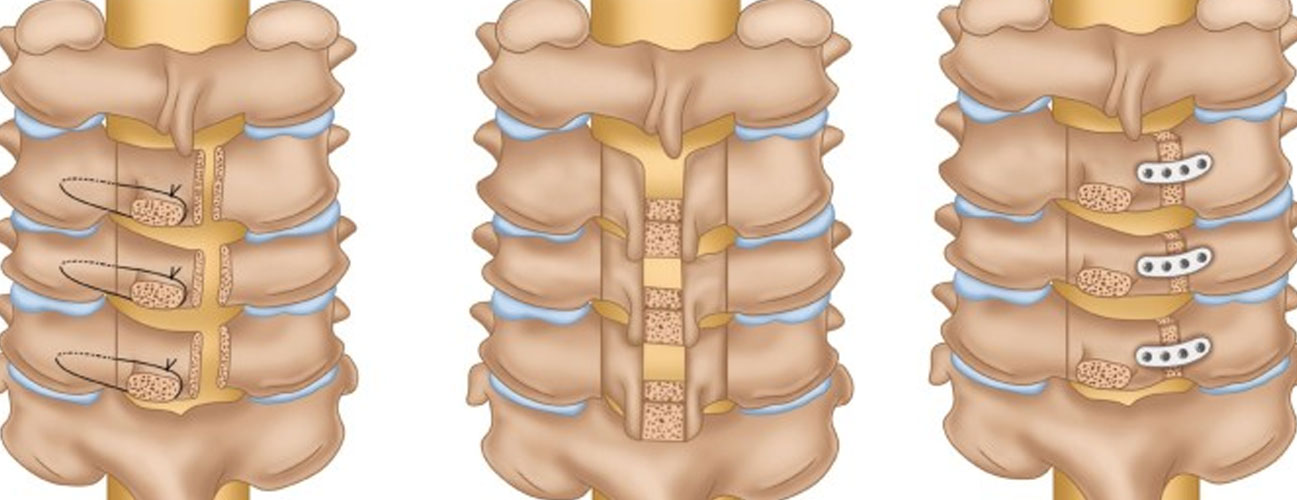Laminoplasty
Laminoplasty is a surgical procedure used to treat certain spinal conditions that involve compression of the spinal cord in the cervical (neck) region. This procedure is designed to relieve pressure on the spinal cord and nerves by creating more space within the spinal canal. Laminoplasty is often performed to address conditions like cervical spondylotic myelopathy (CSM) or cervical stenosis. Here's an overview of laminoplasty treatments:
Procedure :
- Anesthesia: Laminoplasty is typically performed with the patient under general anesthesia, meaning the patient is asleep during the procedure.
- Incisions: The surgeon makes a series of incisions on one side of the cervical spine, typically on the side opposite the location of the spinal cord compression.
- Laminoplasty Technique: There are different techniques for laminoplasty, but one common approach is the "open-door" technique. In this technique, the surgeon partially cuts through the lamina (the bony arch of the vertebra) on one side of the spine, creating a hinge on the other side. This allows the lamina to be lifted and held open like a door, increasing the space within the spinal canal.
Benefits of Laminoplasty:
- Preservation of Stability: Unlike some other procedures, laminoplasty maintains the stability of the spine and reduces the risk of postoperative neck pain and instability.
- Decompression: It effectively relieves pressure on the spinal cord and nerves, reducing symptoms like weakness, numbness, and problems with coordination.
- Minimally Invasive: Laminoplasty is considered a less invasive alternative to traditional laminectomy or fusion surgeries.
- Shorter Recovery: Many patients experience a faster recovery and shorter hospital stay compared to more extensive spinal surgeries.
